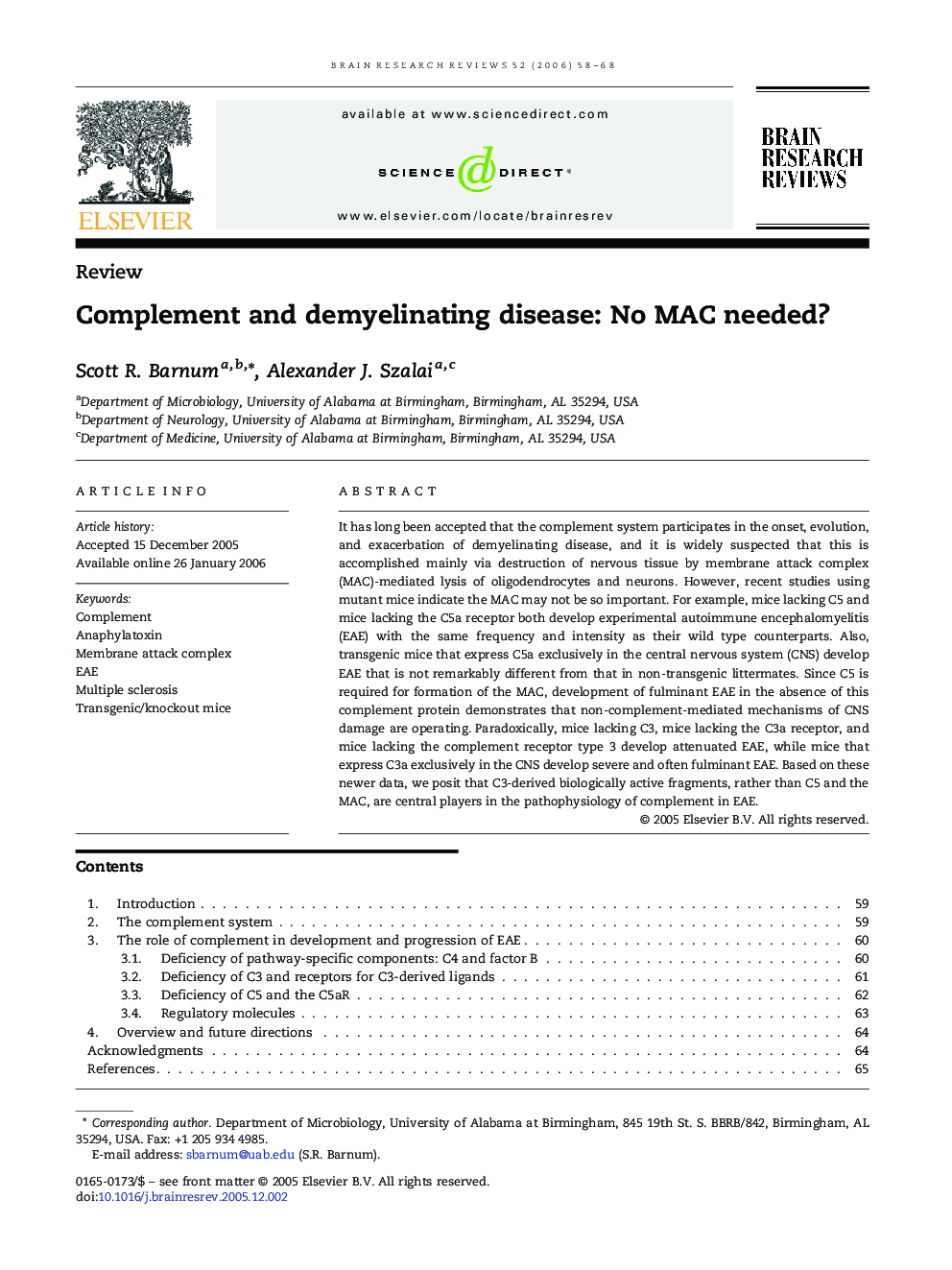| Article ID | Journal | Published Year | Pages | File Type |
|---|---|---|---|---|
| 4334010 | Brain Research Reviews | 2006 | 11 Pages |
Abstract
It has long been accepted that the complement system participates in the onset, evolution, and exacerbation of demyelinating disease, and it is widely suspected that this is accomplished mainly via destruction of nervous tissue by membrane attack complex (MAC)-mediated lysis of oligodendrocytes and neurons. However, recent studies using mutant mice indicate the MAC may not be so important. For example, mice lacking C5 and mice lacking the C5a receptor both develop experimental autoimmune encephalomyelitis (EAE) with the same frequency and intensity as their wild type counterparts. Also, transgenic mice that express C5a exclusively in the central nervous system (CNS) develop EAE that is not remarkably different from that in non-transgenic littermates. Since C5 is required for formation of the MAC, development of fulminant EAE in the absence of this complement protein demonstrates that non-complement-mediated mechanisms of CNS damage are operating. Paradoxically, mice lacking C3, mice lacking the C3a receptor, and mice lacking the complement receptor type 3 develop attenuated EAE, while mice that express C3a exclusively in the CNS develop severe and often fulminant EAE. Based on these newer data, we posit that C3-derived biologically active fragments, rather than C5 and the MAC, are central players in the pathophysiology of complement in EAE.
Keywords
Related Topics
Life Sciences
Neuroscience
Neuroscience (General)
Authors
Scott R. Barnum, Alexander J. Szalai,
